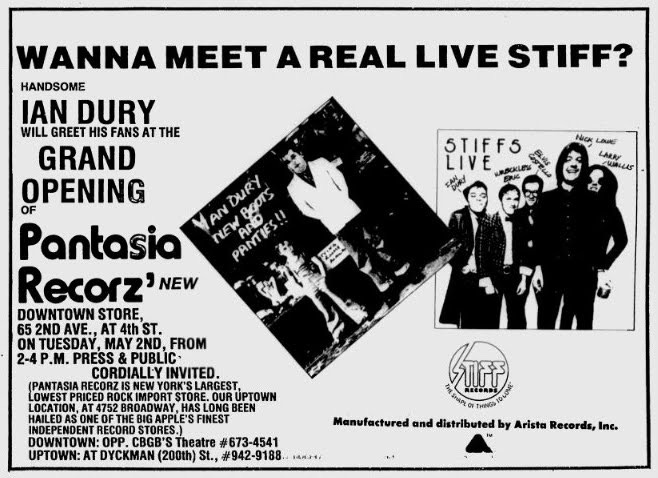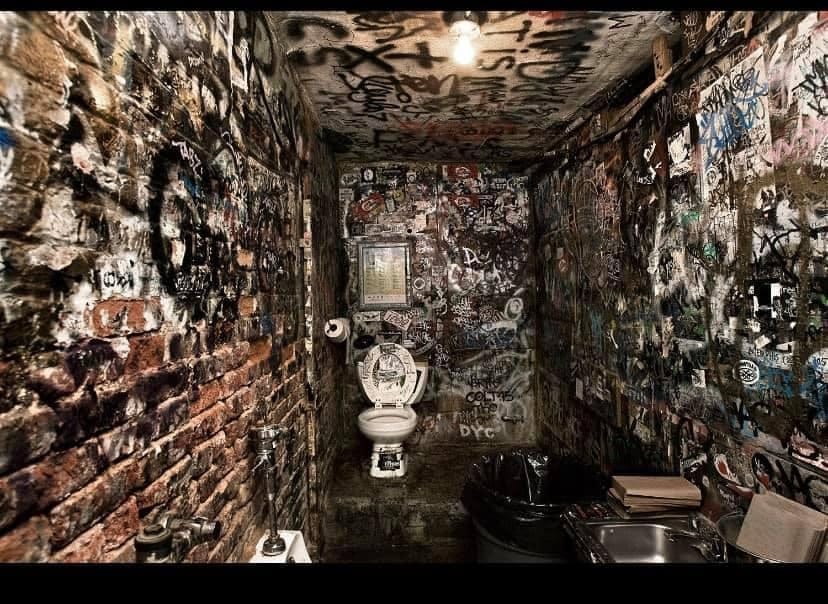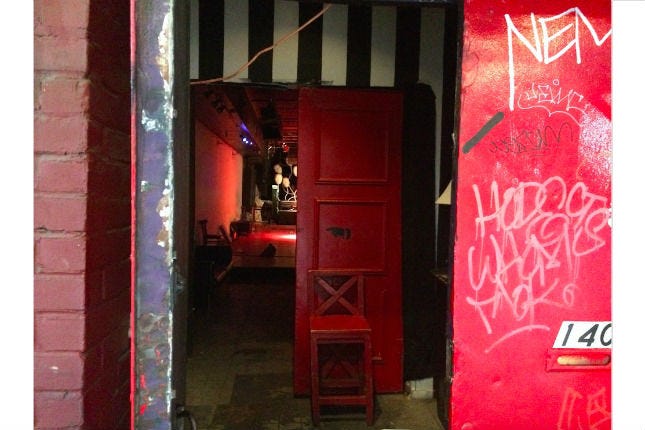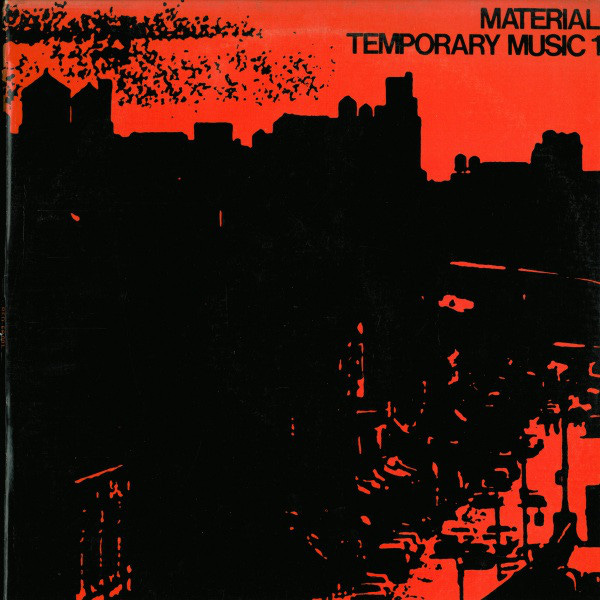Michael Beinhorn Interview
multi-platinum music producer gets started in NY Gong, Zu Band, Material
If you’re a fan of NY No Wave Downtown music circa 1980, you probably know that Michael Beinhorn was a member of the band Material. If you’re in the music biz, you probably know him as the multi-platinum music producer of hit records by Soundgarden, Marilyn Manson, Hole, Red Hot Chili Peppers, KoRn, Ozzy, with worldwide sales of more than 45 million albums, and a 1998 Grammy nomination for Producer of the Year. It was my pleasure to talk with Michael about how he got his start.
Michael Beinhorn Interview:
Michael Beinhorn had a feeling he might be part of something special the first time he went to Zu House. The two older guys who answered the door were about to invite him on a ride. What he could not have known, was that he’s about to board a plane to the stratosphere, not as a passenger, but as a key member of a new crew. And a risky ride it would be since most of this new crew was still in high school. The older guys, bass player Bill Laswell and his then mentor Giorgio Gomelsky, saw something in these kids that made it worth taking the risk. Beinhorn was more than ready to fly. In less than 4 short years he would learn to copilot this plane all the way to the Grammys co-producing Herbie Hancock's platinum hit “Rockit”. After that, piloting his own plane, Beinhorn would crash a few times before finding his wings again. But for THIS story, we’ll learn how this new crew of like minded avant-gardists just might have been in the right place at the right time, that place being downtown NYC, and that time being 1978.
If you were a teenage music lover in the 1970’s, chances are you hung out at a favorite record store or two. For some of us it would become a lifelong habit. I still get a special feeling coursing through my entire body when I walk into a record store. It’s almost like entering a time machine. There may have been a bit more dope smoking paraphernalia behind the counter back in the day, and I do miss the black lights and their glowing posters shimmering on the wall, but it’s the bins where we develop our habit. And it’s the bins where I can still get my fix.
In the late 70’s, on the island of Manhattan, Beinhorn was frequenting the bins of Pantasia Recorz. That’s right, Recorz, with a ‘z’. It was his taste for progressive rock that led him there, and his quest to discover the unknown that kept him glued to the bins. By 1978 Pantasia had moved from Beinhorn’s neighborhood to the Downtown East Village area. Maintaining his habit would now require a journey into a slightly scary landscape for the 17 year-old synth player and his 14 year-old drummer friend Fred Maher. He even ventured into CBGBs on at least one occasion to see a friend’s punk band play. The place was so intimidating that he tried to remain hidden in the background.
Michael had been playing his synth for a couple of years, but his friend Fred was already in a band called 1121. Doing tech work for this band (i.e. running the fog machine) was Martin Bisi. This trio would soon bond and Michael would eventually move in with Martin. During this period, on one of their excursions to the scary zone downtown, Michael and Fred noticed these flyers posted all around, including at their favorite spot Pantasia. These flyers were asking for like minded musicians to join for collaboration. The bands listed as inspiration were a who’s-who of off-the-wall Euro prog rock of the time. These were the bands Michael and Fred loved. They had to answer the flier. Fred made the call.
They showed up for their appointment at a three-story industrial loft in the Chelsea district on the edge of downtown. They would soon learn that the owner of the place referred to it as Zu House. His name was Giorgio Gomelsky, and it was either he or Bill Laswell that opened the door for Michael and Fred. Their lives were about to change forever.
Gomelsky had come to NY in 1978 with a plan … the Zu concept. His previous concepts had helped to shape the music of the Yardbirds, Soft Machine, Gong and Magma, to name a few. Zu would be Gomelsky’s next big media empire. It would start with Daevid Allen from Gong. Gomelsky would bring him to NY and ignite a progressive avant music revolution. And of course any revolution needs a manifesto. In this case, a Zu Manifestival.
The cross-pollination of the Euro progressive avant-garde with the Americans would take place at a 12 hour long festival held on Oct 8 1978 at the Entermedia Theater on 189 Second Ave. Gomelsky had now assembled an American backing band for Daevid Allen called NY Gong. Parts of this band would also play in Gilli Smyth’s band Mother Gong. And from some of these pieces a new band was formed called Zu Band led by Bill Laswell (who also played in both Gong bands). These 3 bands would form the core that would soon tour North America in a school bus. But the list of bands playing the Manifestival could not fit into a school bus. Besides Daevid Allen, the Euro contingent included Chris Cutler from Henry Cow, Yochko Seffer from Magma, and we know Fred Frith was there although his name does not appear on the poster. (Remind me to ask Fred about this.)
For Beinhorn, who would play in at least two of the above bands, the day of the festival was like a daze. He managed to attend the entire 12+ hours simply riding the energy that was swirling around him, even though some of the bands were admittedly a bit over his head. What sounded like noise to him then could later be heard as the start of a major body of work, even genius as in the case of Glenn Branca’s band Theoretical Girls.
When I show Beinhorn a picture of the stage full of instruments used at the fest, his mind is flooded with memories of all those synthesizers. When I ask him how big of an impact he thought the fest had, his answer is simple. Zero. There was a small hard-core audience for this music before the festival, and it remained that way after. When I ask him about the impact of the cross-pollination of performers his answer is different. The hard-core audience may still be small, but the music is much bigger. The Zu revolution was not televised, but it was recorded, and almost lost. Someone found it after Gomelsky died, and it can be heard today on the Gomelsky tribute website.
An idea as big as a 12 hour Manifestival cannot be contained. It must travel. And so it did. In a school bus. Six months after the NY show, the 3 bands and their gear were packed into a modified school bus. They would perform over 20 shows, but most of their two months together would be spent on that bumpy bus. The tiny make-shift loft space created in the back of the bus became the prime relaxation territory, territory worth fighting for and defending. Beinhorn said that space was reserved for the Zu Band, and they weren’t giving it up, even as they faced a mutiny by the other bands on the school bus. He remembers freezing in the dark hours past midnight as they drove through Death Valley, and hours later sweltering in the daylight heat as they exited the same Death Valley. By the time they got back to NY, Beinhorn had made up his mind. Touring was not for him.

But maybe recording was. Barely a month back from the tour they head off to Woodstock to make their first record, a 4 song EP. The studio they find themselves in belongs to Levon Helm from The Band. The engineer is Eddy Offord. Yes, THAT Eddy Offord (Yes, ELP, etc.). Gomelsky knew Eddy going back to the days recording the Yardbirds at Advision Studio in London. Everything about Offord seemed other worldly to Beinhorn, from his Prog aura to his technically advanced studio gear - the same mobile studio gear Offord used to record Yes live. When I ask him about Gomelsky’s style as a producer, he calls him the vibe-master for the session. And when it was over, he made fantastic meatballs.
They went into that session as Zu Band. They would come out of it as Material. The band had made a decision to break away from Gomelsky. But they owed him. They may have changed their name, but they wanted to part “in the right way”. So the master tapes of the first recordings by the band Material would be released on Gomelsky’s Zu Records. It seems to be the only release on Zu Records. The EP, Temporary Music 1, would get re-released many times over the years on other labels.
Everyone in the band Material at this recording session would go on to bigger and better things in the music business. Rather than regurgitating their careers yet again, I would encourage you to explore for yourself what Bill Laswell on bass, Michael Beinhorn on synths, Cliff Cultreri on guitar, and Fred Maher on drums went on to do in their significant roles in the music business that resulted in records you have in your collection right now.
Maybe the most significant of all was the man who made the meatballs. As he did so often in the past, he brought the right people together at the right time. He made things happen. Giorgio Gomelsky. He was the vibe master at Zu House.
Thanks to Michael Beinhorn for taking the time to do this interview. You can find out more about what he’s up to at his website:
Here are two stories on Michael’s blog that I highly recommend:
https://www.michaelbeinhorn.com/you-gotta-give/
July 19, 2010
You gotta give
https://www.michaelbeinhorn.com/red-carpets-and-pots-of-gold/
July 20, 2010
Red carpets and pots of gold








Thank you Rick for this very informative interview and the great photos, specially the one of the red door entrance through which I literally went hundreds of times.
Hey Rick! Your writing is so much better than it was when you first started I think! I enjoyed reading this